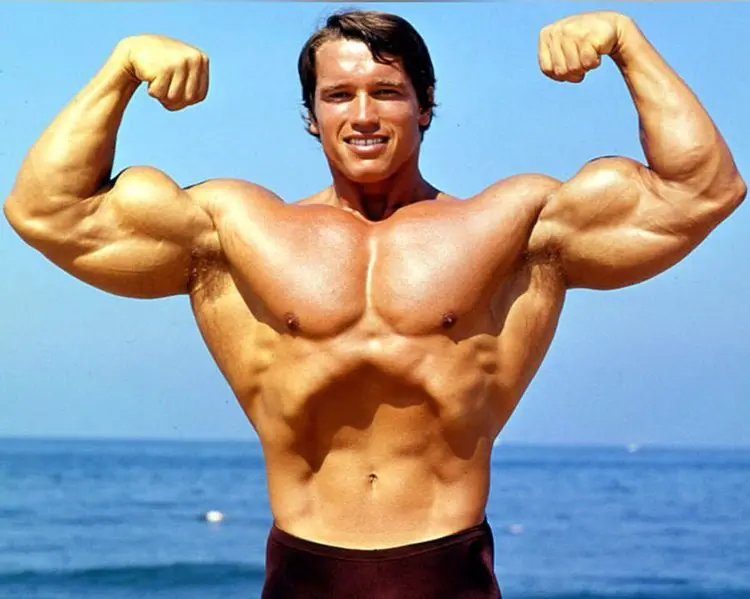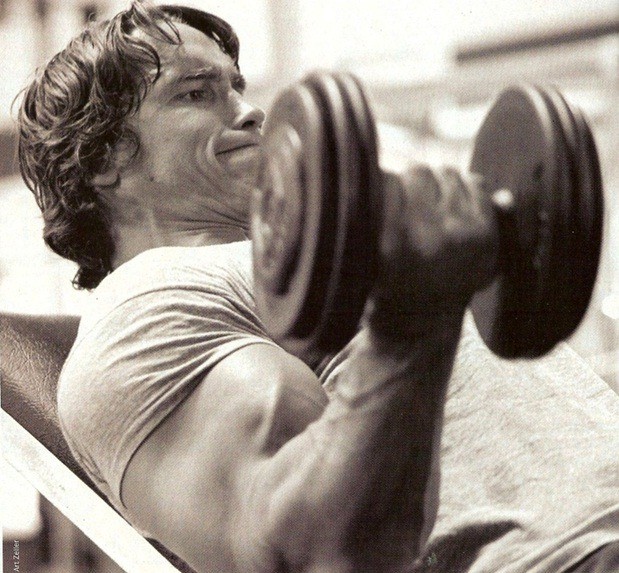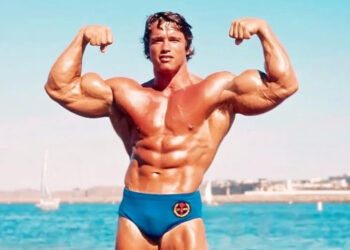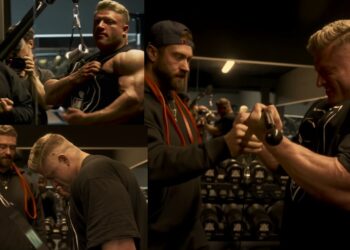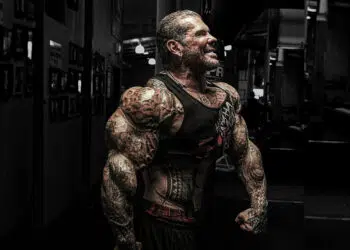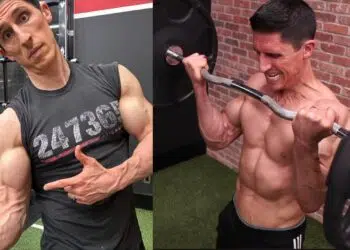Training your arms to grow into shirt sleeve swelling proportions takes a different approach than you might think. It may take a somewhat unorthodox mindset than you’re used to and the death of some training practices you’re most-likely presently using. But fear not, techniques to build bigger arms aren’t rocket science, but it will take trust on your part in order for it to work.
Forget the latest Instagram “fitfluencer” program designed for more likes and comments. It’s time to get back to basics, use some common sense, and put into practice some good-ole fashion hard work to finally grow those guns.
Why your arms won’t grow
Why are your arms not growing? In a word, overtraining. Look around the next time you’re in the gym. Along with countless sets of chest work, the average lifter is racking up set after set of biceps exercises along with a few sets for triceps.
Where have all these sets gotten you? Sore biceps, strained shoulders, and little to no results. It’s understandable that we’ve become so frustrated. Why not add more sets? More angles? Maybe even more weight?
But you’ve done all of that. You’ve lasered-in on those biceps and triceps for months and even years on end with nothing to show for it.
Level Up Your Fitness: Join our 💪 strong community in Fitness Volt Newsletter. Get daily inspiration, expert-backed workouts, nutrition tips, the latest in strength sports, and the support you need to reach your goals. Subscribe for free!
Maybe your biceps program looks a little like this: barbell curls, dumbbell curls, hammer curls, and possibly some preacher or machine curls. With three to four sets each it looks like a typical routine straight off the internet right?
Wrong! Face it, it’s not working. You’re in a rut. You need a change, a shift not only in your training program but also your perspective on how to properly build your arms.
How to build bigger arms
Show me a guy or gal who bench presses, shoulder presses, and rows a lot of weight and does pull ups for days and I’ll show you a set of arms that would rival anyone within grunting distance.
As stated earlier, the first step is to look at arm training with a fresh set of eyes. Wipe the slate clean and throw out your old routine. It’s not working. Growing your arms will take on a new philosophy, one that isn’t all that new.
Let’s take a page out of the old routines of the yesteryear and learn a few new things along the way.
You have options
Just know that you have options. Not everything about building muscle is more reps, more sets, and more weight. We need to take on a different approach. We need enough of a shift that it will not only feel different, but also challenge our current thinking.
Let’s take a look at a few basic techniques that are guaranteed to elicit new arm growth.
Residual arm work:
As briefly mentioned in the example above, presses, rows, and pulls provide an enormous amount of work for your arms. This cannot be lost on the total amount of work your arms are undergoing on a weekly basis. Many lifters turn a blind eye to all the secondary work their arms tolerate. Not only are your arms assisting on multijoint, compound exercises on all of your upper body days, but also as ancillary assisters on other tasks.
For example, your biceps assist on shrugs, Romanian deadlifts, and even hoisting dumbbells up to the starting position for chest and shoulder presses. Any time you load or unload a plate to or from a bar your biceps are under load. For triceps it’s overhead squats, bent-over lateral raises, and ab moves such as planks. All in all, your arms are getting so much direct work that by the time they make it to their own training day they’re exhausted.
They’ve had so much indirect work that it doesn’t really take all that much to “finish them off.” In a way, your arms never get a chance to rest. Keep this fact at the forefront and take it under serious consideration when designing your arm training program. The takeaway is to back off on the volume and intensity techniques and allow your arms to properly recover.
Frequency training:
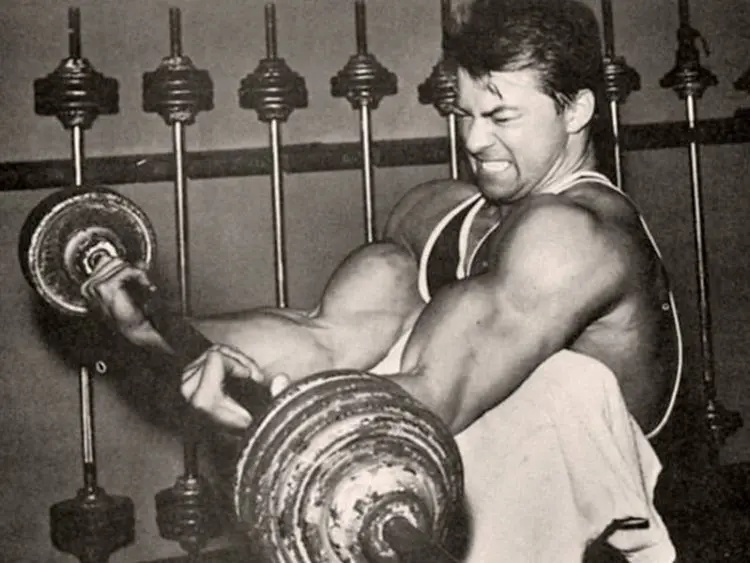
Now, this next point may seem a bit contradictory, but bear with me here. Since we know that the more protein synthesis means more potential muscle growth, then more frequency will spur more arm growth [1]. I’m willing to bet that you currently train arms around once per week. You most-likely kill them with a crazy amount of volume in hopes to force them into new growth.
How is that working for you? Now, taking what was stated above about reducing volume and also implementing a more frequent training schedule, you will have achieved both a stimulating workout (not too much volume) along with a more frequent trigger for protein synthesis (instead of only once per week).
At first, the reduced volume will seem like it’s not enough. You’ll be tempted to add more sets, more reps, and more intensity techniques. Don’t. Over the next few weeks the higher frequency (more frequent stimulation) will kick in and you should start seeing pretty significant results.
Level Up Your Fitness: Join our 💪 strong community in Fitness Volt Newsletter. Get daily inspiration, expert-backed workouts, nutrition tips, the latest in strength sports, and the support you need to reach your goals. Subscribe for free!
Volume and frequency are reciprocals of each other. When volume increases frequency will decrease and as frequency increases volume should be on the low side. If you were to keep volume high and try to train more frequently, you will burn out rather quickly. Your arm growth would either stop or possibly reverse.
Isolated arm training:
So with more reliance on residual growth from the bigger compound moves, a lower volume of work, and a higher frequency of stimulation we will now move on to arm training itself. Of course we’ll need some isolated work, but don’t think of this as an “arm day.” Instead, think of these moves as finishing off your arms after all the aforementioned compound work.
It won’t take a ton of sets to finish off your arms. On the program below you’ll perform two angles each for biceps and triceps. If you think about the basic function of both muscle groups it’s rather simple. Why would you need countless angles for such a small, simple muscle group? Arm structure and function is much more simplified than that of the back, for example.
The biceps flex the arm while the triceps extend the arm. Pretty short and simple. With that in mind we’ll take two angles for each muscle group and apply them with functionality in mind.
Arm Training
In the beginning, perform the following arm routine twice per week for four weeks and then move on to three times per week. Fit the routine where you can. You could train biceps separately or with triceps. Start with two sets each and then move up to three sets per week.
You’ll also perform an A and B routine for arms rotating each routine for variety. Keep rotating both routines no matter where they land.
Routine A
- Incline dumbbell curl 2-3 x 10-12
- Barbell curl 2-3 x 8-10
- V-bar or rope pressdown 2-3 x 12-15
- Barbell nosebreaker 2-3 x 8-10
Routine B
- Standing dumbbell curl 2-3 x 8-10
- Cable curl 2-3 x 12-15
- Lying dumbbell nosebreaker 2-3 x 10-12
- Straight bar pressdown 2-3 x 12-15
Feel free to superset biceps and triceps to both save on time and increase the intensity of the workout. The exercises are set up so that you’re not traipsing all over the gym from one exercise to the next. It can easily be done within very close proximity of each other and even on the same weight bench.
Routine A
Superset:
- Incline dumbbell curl 2-3 x 10-12
- V-bar or rope pressdown 2-3 x 12-15
Superset:
- Barbell curl 2-3 x 8-10
- Barbell nosebreaker 2-3 x 8-10
Routine B
Superset:
- Standing dumbbell curl 2-3 x 8-10
- Lying dumbbell nosebreaker 2-3 x 10-12
Superset:
- Cable curl 2-3 x 12-15
- Straight bar pressdown 2-3 x 12-15
Patience and ego
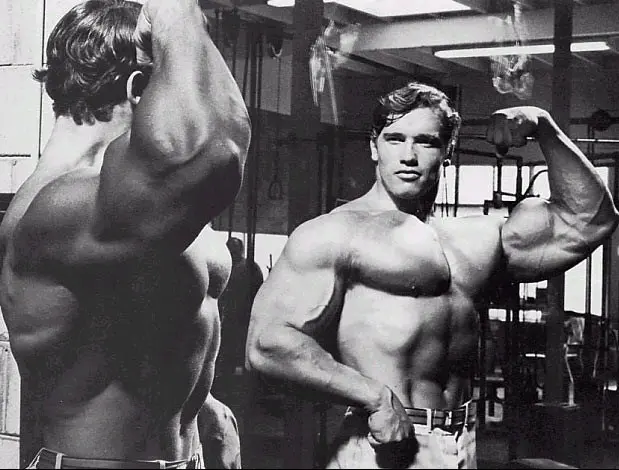
You will want to instinctively add more sets, but try your best to stick to the plan. At first you’ll feel like you’re not doing enough volume. Trust the process. Your arms will have a period of time where they will catch up on recovery.
Afterword, by focusing more intensity on fewer sets, you’ll gain a new perspective on growing your arms with a more simplified effort versus stretching yourself thin with too many sets.
Over time your strength and arm growth will start to take off and you’ll look back at all those sets you did shaking your head.
Read also:
- Best Biceps Exercises
- Best Old-School Bicep Workouts
- Simple Old-School Methods To Grow Your Biceps
- Short Head Biceps Exercises For Bigger Upper Arms
- Long Head Biceps Exercises for Bigger Arms and Peak
In closing
Arm training shouldn’t be complicated nor a marathon workout. Stop beating your arms into submission, back off on the volume, and give them the recovery they deserve. If your current routine isn’t working, give the above routine a try. It may not be sexy or look like rocket science, but it will produce results. You’ve got nothing to lose.
References:
1. Damas F, Phillips SM, Libardi CA, Vechin FC, Lixandrão ME, Jannig PR, Costa LA, Bacurau AV, Snijders T, Parise G, Tricoli V, Roschel H, Ugrinowitsch C. Resistance training-induced changes in integrated myofibrillar protein synthesis are related to hypertrophy only after attenuation of muscle damage. J Physiol. 2016 Sep 15;594 (18):5209-22. doi: 10.1113/JP272472. Epub 2016 Jul 9. PMID: 27219125; PMCID: PMC5023708.


